Try this quick and easy method to make dim sum style chicken feet. This home-style recipe offers the same flavour and tenderness with less time and effort.
Chicken feet, known as 鳳爪 (fung zaau) or 雞腳 (gai goek) in Cantonese, are a popular delicacy and street food in Cantonese cuisine. Regarded as a symbol of fortune and prosperity, these bony, claw-shaped items may look unappealing at first glance but offer a unique texture and flavor that is cherished by Cantonese people.
A Brief History
In China, people have been eating chicken feet for hundreds of years. The first written records of this are from the Ming Dynasty. At first, chicken feet were used as medicine because people thought they were good for the body and would keep it healthy. Over time, people started to enjoy them for their taste and texture, and dim sum tea houses and restaurants started to serve them all the time.
Now, they are ubiquitous in Cantonese cooking and an iconic part of the culinary tradition. From Hong Kong to Chinatowns abroad, chicken feet remain a staple on menus and a go-to snack for locals and foodies seeking an authentic experience
Appearance and Texture
True to their name, chicken feet are the actual feet of chickens. They consist of the long, thin toes and claws with a thin layer of skin and some cartilage attached. Most of the muscle meat is removed, leaving the bone, skin, tendons, and ligaments.
The skin turns into gelatin after cooking, but the tendons and ligaments stay springy. This creates a unique, chewy mouthfeel unlike any other ingredient. The bones can easily be sucked clean as well. People also love the thick, collagen-rich stock that is made by cooking chicken feet.
Flavor
Chicken feet don’t have a strong flavor by themselves, but they easily take on and complement other strong, savory flavors. Common seasonings used in Cantonese chicken feet dishes are
-
Black bean sauce has a rich, earthy, slightly sweet umami flavor because it is made from fermented soybeans.
-
Oyster sauce – Adds a briny taste and savory boost.
-
Sesame oil – Provides nutty, aromatic notes
-
Five-spice powder – A blend of spices including star anise, clove, cinnamon, fennel, and Sichuan peppercorn.
-
Shaoxing wine – A Chinese rice wine that lends sweetness.
-
Ginger and green onions – Give brightness and freshness.
The sauces cling nicely to the rippled skin and get trapped between the nooks and crannies of the bones, allowing for bites packed with intense flavor.
Cooking Methods
There are several classic ways that chicken feet are prepared in Cantonese cuisine:
-
Braised Chicken Feet – The feet are fried then simmered for hours in a sauce until fork tender. This intensifies the flavor and makes them fall-off-the-bone soft.
-
Steamed Chicken Feet – After marinating in rice wine, soy sauce, and spices, the feet are steamed until just cooked through. This lighter cooking method maintains the collagen-rich skin.
-
Deep Fried Chicken Feet – The feet are coated in a batter then fried until crispy. This gives the most texture contrast between the crunchy exterior and the gelatinous skin.
-
Chicken Feet in Black Bean Sauce – This stir fry combines chicken feet with onions, peppers, and black beans for a quick, flavor-packed dish.
Where to Enjoy Chicken Feet
The best places to sample authentic chicken feet in Cantonese style are in Hong Kong and Chinatowns in cities with large Cantonese populations like Los Angeles, San Francisco, New York, Sydney, and Vancouver. Look for them at:
-
Dim sum restaurants – Chicken feet are a popular item featured on dim sum carts and menus.
-
Street food stalls – Hong Kong is famous for its street food, where chicken feet are sold as snacks.
-
Cantonese barbecue shops – Chicken feet are often hung alongside ducks and roasted meats.
-
Soup noodle joints – Many soups feature chicken feet as the star ingredient.
For the adventurous eaters out there, don’t knock chicken feet until you’ve tried them – you may just get hooked on their unique taste and texture like the Cantonese have for generations. They are an important part of Hong Kong’s culinary heritage that’s worth experiencing.
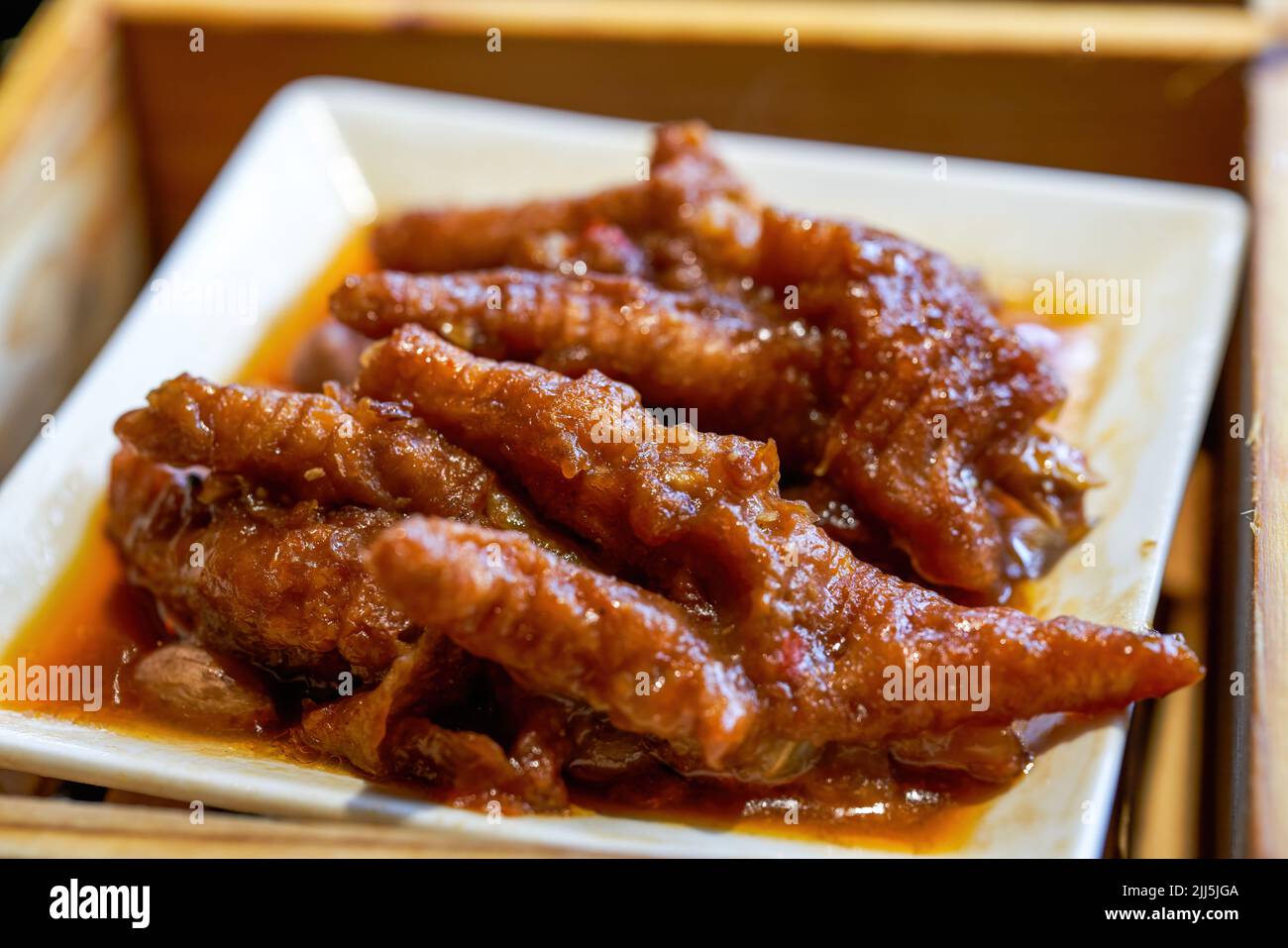
What do they taste like
Though this part of the chicken is not as meaty as the rest, they still somewhat taste like chicken. Texture-wise, the abundance of collagen gives them a gelatin-like texture when cooked.
Every bite will feel rich and almost luxurious, which you won’t get from any other chicken cut. Also, the skin on the chicken feet really soaks up the flavors of the spices and seasonings.
You would most probably find chicken feet in the frozen section of your local Chinese/Asian shops with the outer, yellowish tough skin already removed.
In case this is not possible, you can always ask your local butcher to save them for you. You will probably get them cheap because some outlets just throw them away.
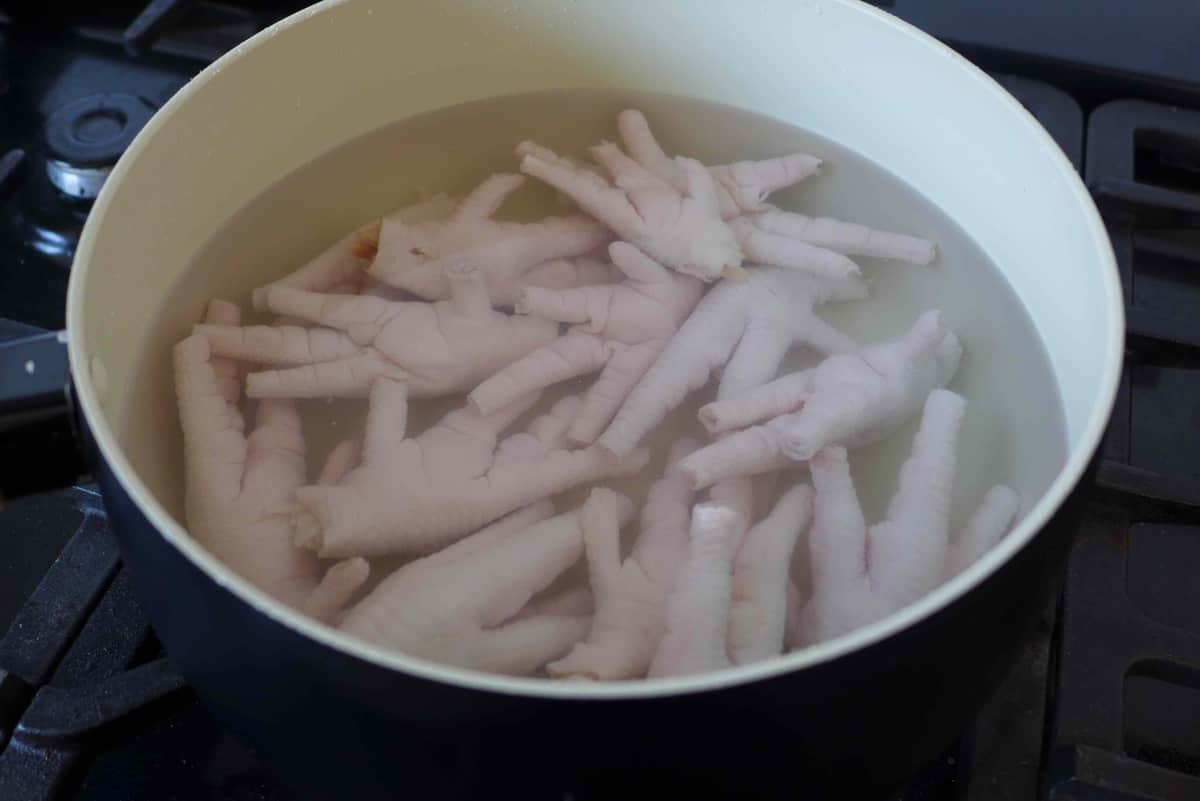
Before cooking, follow these steps to clean:
- Take off the yellow skin on the outside (skip this step if it’s already off). Dip the feet for a short time in boiling water, then move them to water that is very cold. Afterward, it will be simple to peel off (this video on how to clean chicken feet might be helpful).
- Rinse and rub under tap water. Clean the soles of your feet and the space between your toes.
- Chop off the nail part. Use kitchen scissors or a knife to do this.
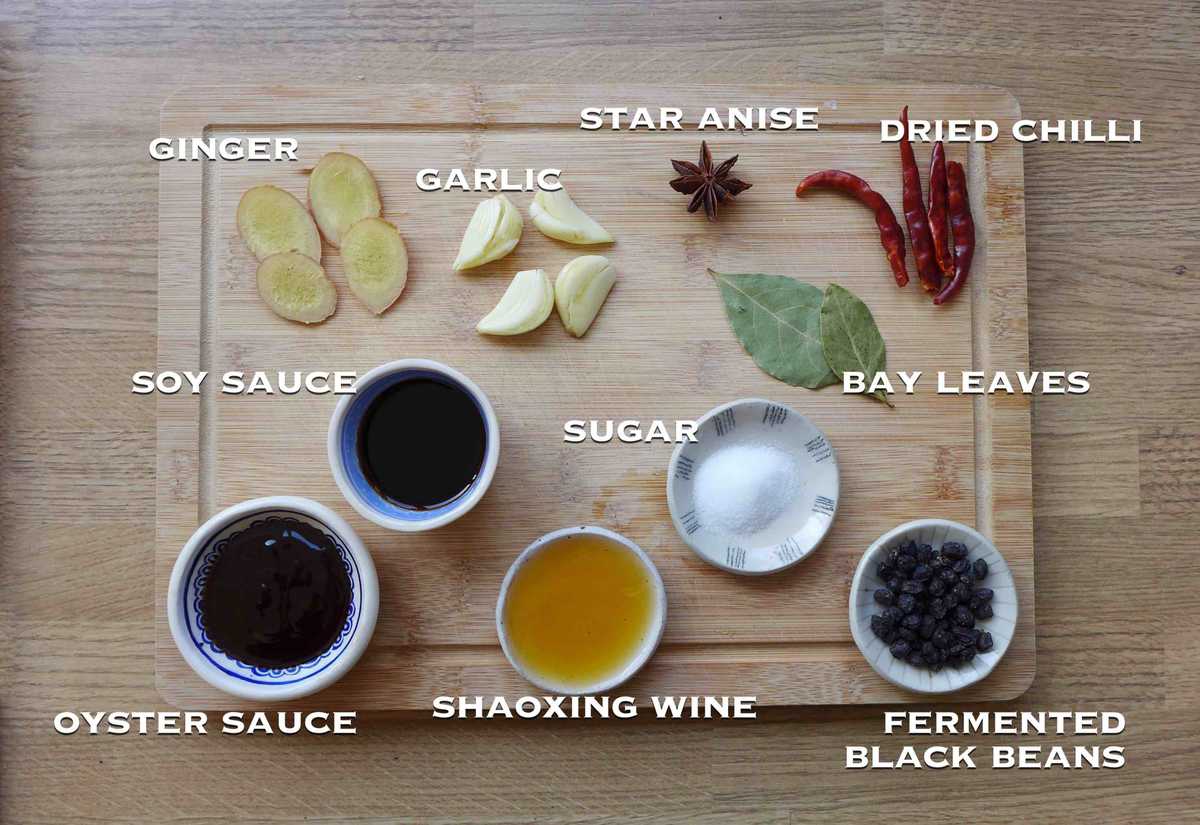
- Chicken feet. I use 500g (about 1. 1 lb) in this recipe, which will make 14 to 16 feet
- Aromatics. The braising liquid will smell good because of the garlic and ginger.
- Spices. Star anise, bay leaves, and dried chili pepper work together to make a flavor that is warm, earthy, and fiery. Chilies aren’t required, but they’re highly suggested because the mild heat they add really makes the taste better.
- Fermented black beans. The Chinese call them Dou Chi (豆豉), and they have a very interesting flavor that is earthy, salty, sweet, and smoky. They are often used to make chicken feet in a dim sum style. However, you can omit them if unavailable.
- Sauces. I mix oyster sauce, light and dark soy sauce. They give the braising liquid a color that looks good and a flavor that isn’t sweet.
- Shaoxing rice wine. It takes away the gamey taste and gives it an aromatic taste.
- Sugar. It adds a subtle taste of sweetness to the dish.
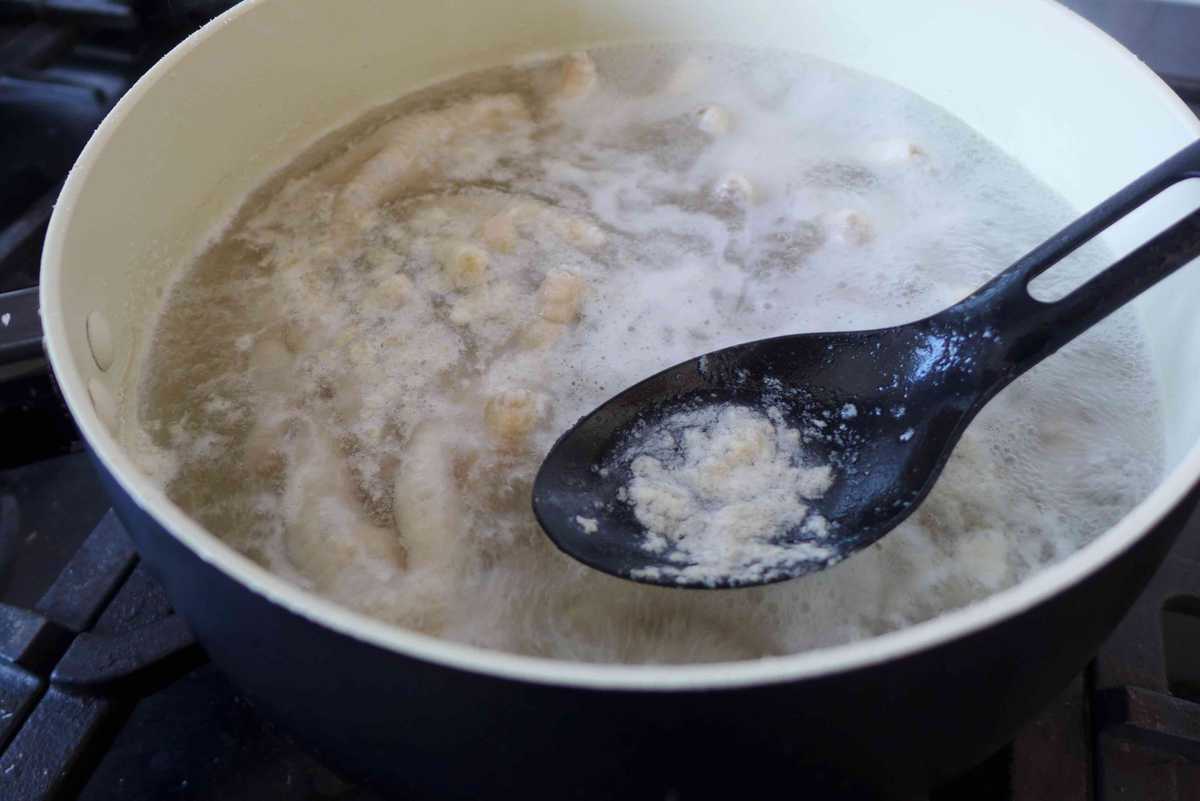
Once the chicken feet are cleaned and the nails trimmed, place them in a pot of water. Bring to a boil then leave to simmer for 5 minutes (skim off the grey foam appearing on the surface). Remove from heat and drain the feet thoroughly.
How to eat chicken feet
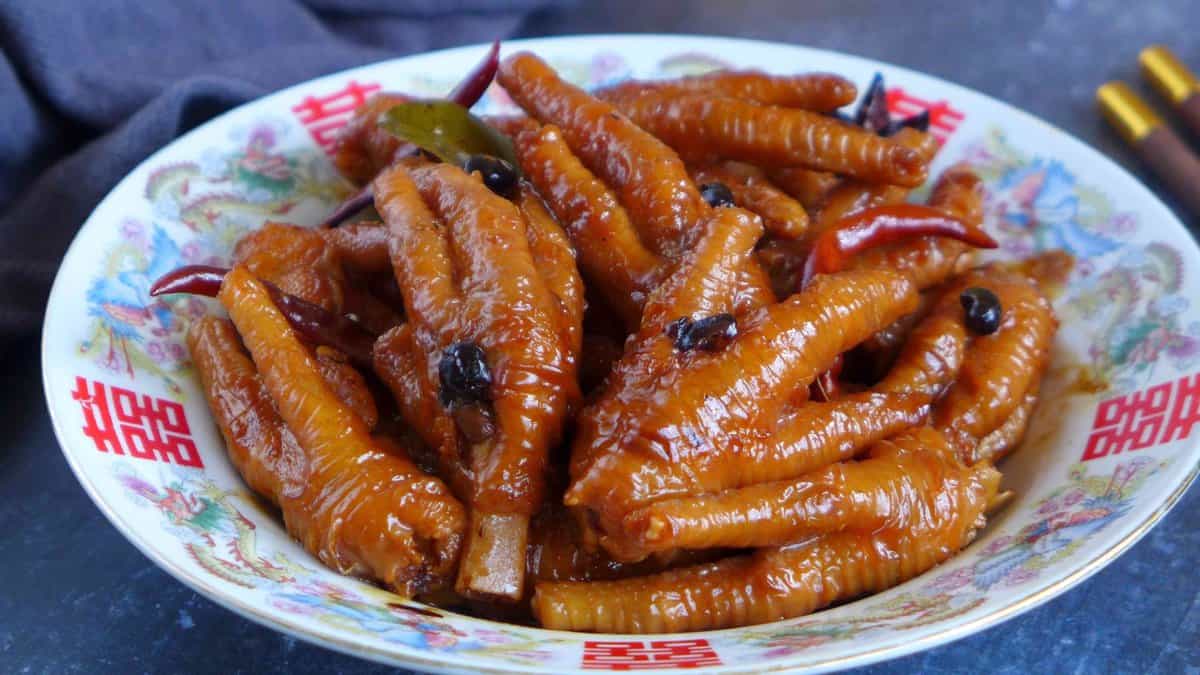
If you are new to eating chicken feet, here are a few tips you may find useful:
- Use chopsticks to firmly grasp the chicken feet. Hold them with the toes pointing towards you.
- Bite between the joints. Take off the skin and suck on the soft, collagen-rich cartilages and tendons. Then spit out the bones.
- Do the same thing with the foot pads until you’re done.
Enjoy these freshly cooked chicken feet as an appetiser in a multi-course meal served with steamed rice. Or include it in a home-style dim sum brunch.
They also taste great at room temperature and I often find cold ones tastier as the flavour seems to intensify over time. So they make a wonderful snack (e.g. while watching TV with a cool beer!). In this situation, using your hands, instead of chopsticks, is more natural and practical.
Store any leftovers in the fridge for up to 3 days or in the freezer for 2 months. Bring back to room temperature to serve or steam for a few minutes to reheat.
Chicken Feet: Just Like Dim Sum! (鳳爪)
FAQ
What is chicken feet in Chinese Cantonese?
Chicken feet are used in several regional Chinese cuisines; they can be served as a beer snack, cold dish, soup or main dish. They are interchangeably called Fèng zhǎo (鳯爪, phoenix claws), Jī zhǎo (鷄爪, chicken claws), and Jī jiǎo (雞脚, chicken feet).
What is the Chinese name for chicken feet?
In Chinese, chicken feet are called 凤爪 (fèng zhuǎ), which literally translates to “phoenix claws”. They are also sometimes referred to as 鸡爪 (jī zhuǎ) or 鸡脚 (jī jiǎo).
What is the proper name for chicken feet?
Chicken feet can be referred to as either chicken feet or chicken paws. The term “chicken feet” generally refers to the entire foot including the lower leg portion, while “chicken paws” typically refers to just the foot itself, without the lower leg.
What is pokai in Cantonese?
Etymology. Cantonese 仆街 (puk1 gaai1, “fall onto street, drop dead, go to hell”), from 仆 (puk1, “fall”) + 街 (gaai1, “street”).
How do I choose the best chicken feet?
When you buy chicken feet, they usually come in bags that are already put together, so you might not be able to choose the best one. In general, avoid pieces that look overly dehydrated, and discolored and yellowed. Ideally, each piece in the package should be approximately the same size.
How do you prepare chicken feet for cooking?
To prepare the chicken feet for cooking, first, clean the feet thoroughly under running water. This step is crucial to ensure that any dirt or grime is removed from the skin. Once cleaned, pat dry the chicken feet with a kitchen towel.
How do you make chicken feet taste better?
Using ice water for the last soak of the chicken feet is an important step that will help you get a crisp texture. If you want a softer texture or your teeth are sensitive or weak, cover the cooked chicken feet and let them steam for 5 minutes more. Remove seeds from the lemon to avoid bitterness.
